trees to see
Stoneleigh’s magnificent trees represent more than 150 years of landscape design and careful stewardship. Their leafy boughs comfort us, help clean our air, and provide the garden’s architectural and ecological framework.
Stoneleigh’s magnificent trees represent more than 150 years of landscape design and careful stewardship. Their leafy boughs comfort us, help clean our air, and provide the garden’s architectural and ecological framework.
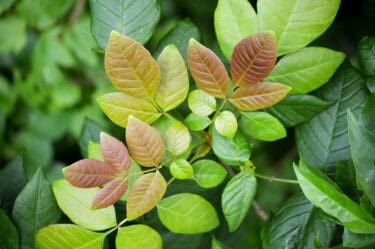
Kyle Costanzi
White ash is native to eastern North America and is the largest of the native ashes, typically growing to 80 feet tall. White ash is a valuable timber tree. Its wood is used for a variety of products like tool handles, oars, garden furniture, and sports equipment—including the Louisville Slugger baseball bats.
Native ash trees are becoming a rare sight due to an invasive beetle known as the emerald ash borer.
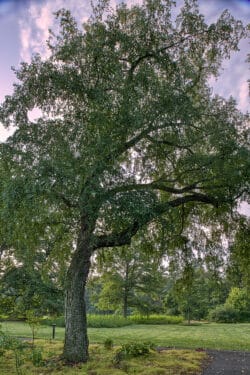
David Korbonits
River birch has a special type of flower structure called a “catkin,” derived from the Old Dutch word for kitten, because the cylindrical flower clusters resemble a kitten’s tail. The native river birch is a host plant for Mourning Cloak and Dreamy Duskywing butterflies.
In nature this tree is often found in moist soils but is widely adaptable. It can be easily identified by its cinnamon-colored, exfoliating bark and is a great choice for home gardens.
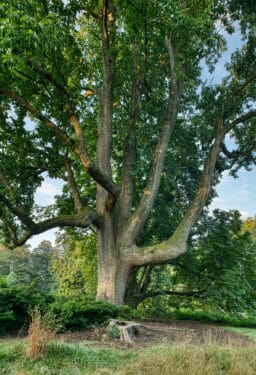
David Korbonits
This tree is native to the eastern U.S. The species makes a great shade tree and is a fast grower, however the flowers are not showy. Unripe fruits resemble small cucumbers, but ripen to a dark red color.
Native peoples used cucumber magnolia bark for toothache pain and as a remedy for diarrhea. Settlers combined extracts from the green fruit with whisky for a fever medicine.
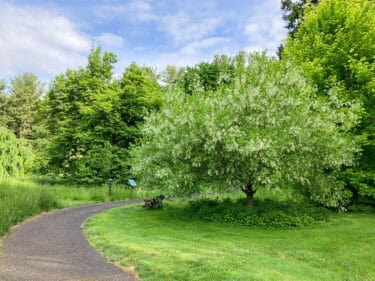
Samantha Nestory
Considered a small tree or large shrub, this native species boasts fleecy, white flowers that hang from the branches like a late-spring snowfall.
In 2014, observers began noting infestations of emerald ash borer, an invasive and highly destructive beetle, on white fringetrees in areas where they grow alongside ash trees.
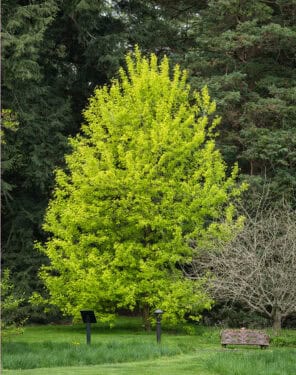
David Korbonits
Boxelder is actually a maple tree native to North America. As its name implies, the tree attracts beautiful boxelder bugs, which feed on the seeds. Many birds eat the seeds as well; the Evening Grosbeak, in particular.
Native tribes use boxelder wood and sap for a variety of purposes, including flutes, bowls, drums, incense, and even a crystalized candy. Ancient flutes excavated from Arizona in 1931 were made from boxelder wood and date to 620-670 C.E.
This vibrant selection produces striking gold leaves in the spring.
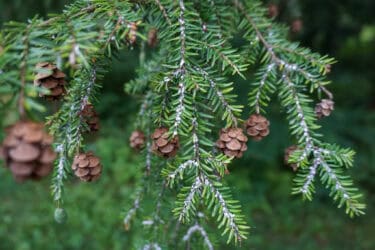
Samantha Nestory
This graceful evergreen is the state tree of Pennsylvania. A long-lived tree, the oldest recorded specimen was more than 550 years old.
Hemlock is susceptible to woolly adelgid, a tiny, sap-sucking insect accidentally introduced from Asia in the 1920s. This pest has killed most of the old-growth hemlocks in the Great Smoky Mountains and Shenandoah National Park, and has greatly affected eastern forests as well.
Because there are more than 140 hemlocks at Stoneleigh, it is an excellent place to experience the character of a species once dominant in Appalachia.
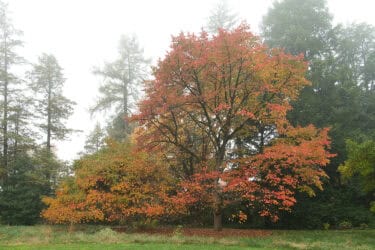
David Korbonits
This native, deciduous tree has another common name, black tupelo, derived from the Creek Tribe words for “swamp tree.” Though it thrives in wet soils, the species can tolerate dry conditions.
Although not showy, the flowers are an important nectar source for bees. Mammals and songbirds favor the fruits. The tree is prone to forming hollows that offer nesting places for racoons, possums, and other wildlife.
Native peoples used tupelo twigs to clean their teeth.
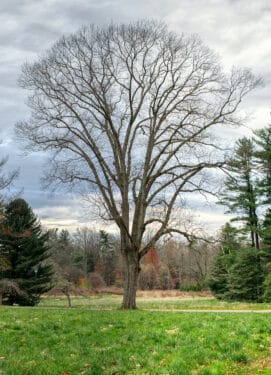
David Korbonits
Oaks are among the most important native plants for supporting insect and bird life. The red oak is one of the fastest growing and largest of the genus, topping out at 100 feet if grown in the open.
These trees put on a spectacular fall display, as their common name implies. Unlike those of white oaks, red oak acorns are produced every other year and won’t germinate without at least three months of temperatures below 40 degrees.
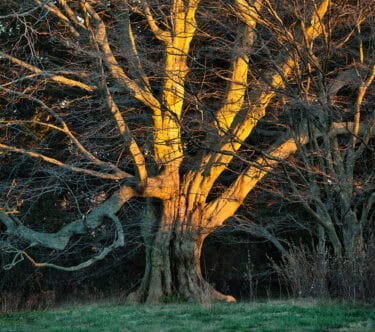
David Korbonits
Graceful American beech tree is notable for its silver-gray bark, shade tolerance, and abundant autumn nuts—an important source of food for raccoons, porcupines, squirrels, chipmunks, and black bear.
Groves of old-growth specimens are a testament to the dense wood that often
couldn’t be lumbered with axes.
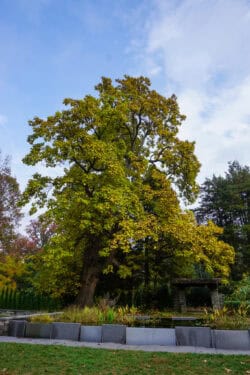
Samantha Nestory
Southern catalpa is native to the Gulf Coast states but is now widely naturalized to much of the United States. Native peoples called them “catawba,” meaning “winged head,” likely in reference to the winged seeds that emerge from the tree’s long bean-like pods.
The species produces a bitter-tasting chemical compound that deters herbivores. Catalpa Sphinx moth caterpillars, however, not only tolerate these compounds, but thrive on them. In fact, the catalpa tree is the sole source of food for this species’ larvae. The caterpillars may
defoliate a tree three times in one summer without killing it.
The Stoneleigh catalpa’s massive trunk measures 204 inches around and its canopy has a spread of 63 feet. The tree measures 82 feet tall, a remarkable height for a species that usually caps out at half that. Its height is even more remarkable, considering the Stoneleigh tree lost a
huge section of its main trunk in a storm decades ago.
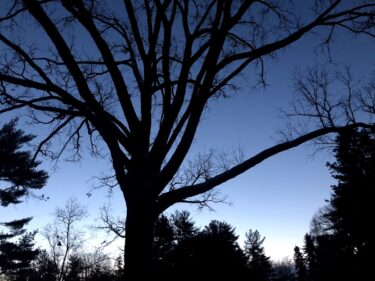
Summer Sugg
Native to our region, bur oak is a large, long-lived tree, reaching up to 120 feet in height and 1,000 years in age. It thrives in a wide range of environmental conditions, including both dry and wet soils. It is the most fire resistant of the oaks thanks to its thick bark.
Macrocarpa translates to “large fruit,” a reference to the size of the tree’s acorns, which are an important food source for wildlife.
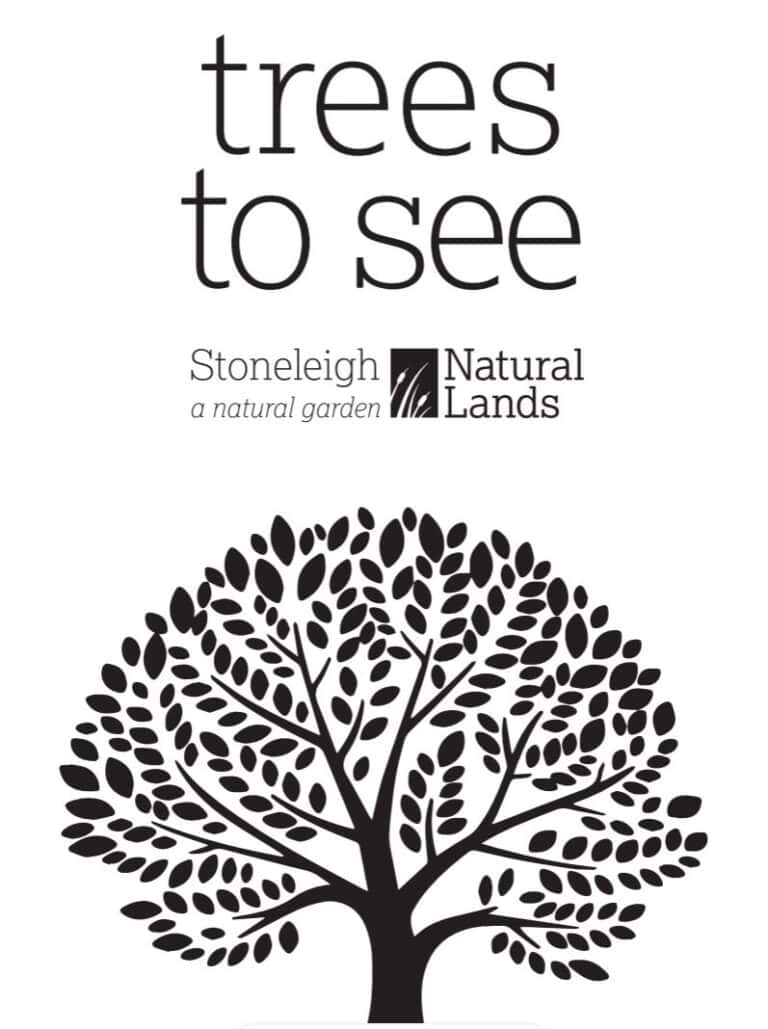
Download the Trees to See brochure to view the full list of big trees at Stoneleigh. (Or, better yet, come visit and see them for yourself!)